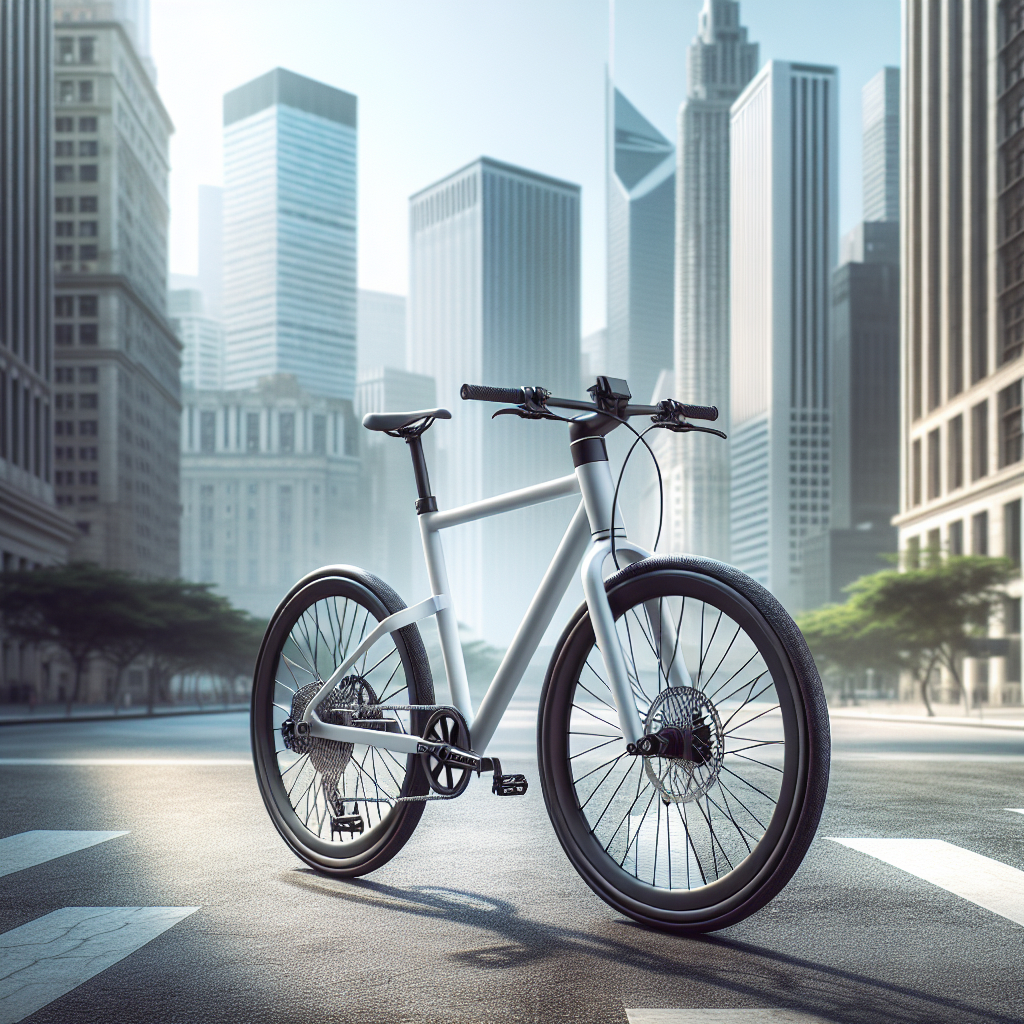
Single-speed bikes have gained popularity in urban environments due to their simplicity and ease of use. These bicycles, which feature a single gear ratio, offer a straightforward and efficient mode of transportation for city dwellers. In this article, we will explore the benefits of single-speed bikes, their design and maintenance, and why they are an excellent choice for urban commuting.
Benefits of Single-Speed Bikes
Single-speed bikes offer numerous advantages, particularly for those navigating the bustling streets of a city. Here are some key benefits:
Simplicity and Ease of Use
One of the most significant advantages of single-speed bikes is their simplicity. With only one gear, riders do not need to worry about shifting gears, which can be a daunting task for beginners. This simplicity makes single-speed bikes an excellent choice for those new to cycling or those who prefer a hassle-free riding experience.
Low Maintenance
Single-speed bikes require less maintenance compared to multi-gear bicycles. The absence of derailleurs, shifters, and multiple gears means fewer components that can wear out or break. This translates to lower maintenance costs and less time spent on repairs, making single-speed bikes a cost-effective option for urban commuters.
Lightweight and Efficient
Without the additional components required for gear shifting, single-speed bikes are generally lighter than their multi-gear counterparts. This reduced weight makes them easier to carry up stairs or onto public transportation. Additionally, the direct power transfer from the pedals to the wheels makes single-speed bikes highly efficient, allowing riders to maintain a steady pace with minimal effort.
Enhanced Durability
The simplicity of single-speed bikes also contributes to their durability. With fewer moving parts, there is less chance of mechanical failure. This durability is particularly beneficial for urban riders who may encounter rough roads, potholes, and other obstacles. A single-speed bike can withstand these challenges better than a more complex bicycle.
Design and Maintenance of Single-Speed Bikes
Understanding the design and maintenance of single-speed bikes can help riders make informed decisions and keep their bikes in optimal condition. Here are some key aspects to consider:
Frame and Geometry
Single-speed bikes come in various frame materials, including steel, aluminum, and carbon fiber. Each material has its own set of advantages. Steel frames are known for their durability and smooth ride quality, while aluminum frames are lightweight and resistant to rust. Carbon fiber frames offer the best of both worlds but come at a higher price point. The geometry of the frame also plays a crucial role in the bike’s performance and comfort. Urban riders typically prefer a more upright geometry for better visibility and comfort during city commutes.
Braking Systems
Single-speed bikes can be equipped with different types of braking systems, including rim brakes, disc brakes, and coaster brakes. Rim brakes are lightweight and easy to maintain but may not perform as well in wet conditions. Disc brakes offer superior stopping power and perform well in all weather conditions, but they add weight and complexity to the bike. Coaster brakes, which are activated by pedaling backward, are simple and low-maintenance but may not provide the same level of control as hand-operated brakes.
Chain and Drivetrain
The chain and drivetrain of a single-speed bike are straightforward, consisting of a single chainring at the front and a single cog at the rear. This simplicity reduces the likelihood of chain slippage and makes maintenance easier. Regular cleaning and lubrication of the chain are essential to ensure smooth operation and extend the life of the drivetrain components.
Wheel and Tire Selection
Wheel and tire selection can significantly impact the performance and comfort of a single-speed bike. Urban riders often prefer wider tires for better traction and shock absorption on rough city streets. Puncture-resistant tires are also a popular choice to minimize the risk of flats. The wheels should be sturdy and capable of withstanding the demands of urban riding, including frequent stops and starts, curbs, and potholes.
Why Single-Speed Bikes Are Ideal for Urban Commuting
Single-speed bikes are particularly well-suited for urban commuting for several reasons. Here are some factors that make them an excellent choice for city riders:
Cost-Effectiveness
Single-speed bikes are generally more affordable than multi-gear bicycles. Their simple design means fewer components, which reduces manufacturing costs. Additionally, the lower maintenance requirements translate to long-term savings. For budget-conscious commuters, a single-speed bike offers an economical and reliable mode of transportation.
Environmental Benefits
Riding a single-speed bike contributes to environmental sustainability. Bicycles produce zero emissions, making them an eco-friendly alternative to motor vehicles. By choosing a single-speed bike for daily commutes, riders can reduce their carbon footprint and contribute to cleaner air in urban areas.
Health and Fitness
Commuting by single-speed bike provides an excellent opportunity for physical exercise. The consistent pedaling required to maintain speed on a single-speed bike helps improve cardiovascular health, build muscle strength, and enhance overall fitness. Regular cycling can also reduce stress and improve mental well-being, making it a holistic approach to a healthier lifestyle.
Community and Social Interaction
Urban cycling fosters a sense of community and social interaction. Riders often encounter fellow cyclists, pedestrians, and other commuters, creating opportunities for social engagement. Many cities also have cycling clubs and events that bring together like-minded individuals, promoting a sense of camaraderie and shared purpose.
Conclusion
Single-speed bikes offer a simplified and efficient solution for urban commuting. Their ease of use, low maintenance, and cost-effectiveness make them an attractive option for city dwellers. By understanding the benefits, design, and maintenance of single-speed bikes, riders can make informed decisions and enjoy a reliable and enjoyable cycling experience. Whether you are a seasoned cyclist or a newcomer to the world of biking, a single-speed bike can provide a practical and sustainable mode of transportation in urban environments.

